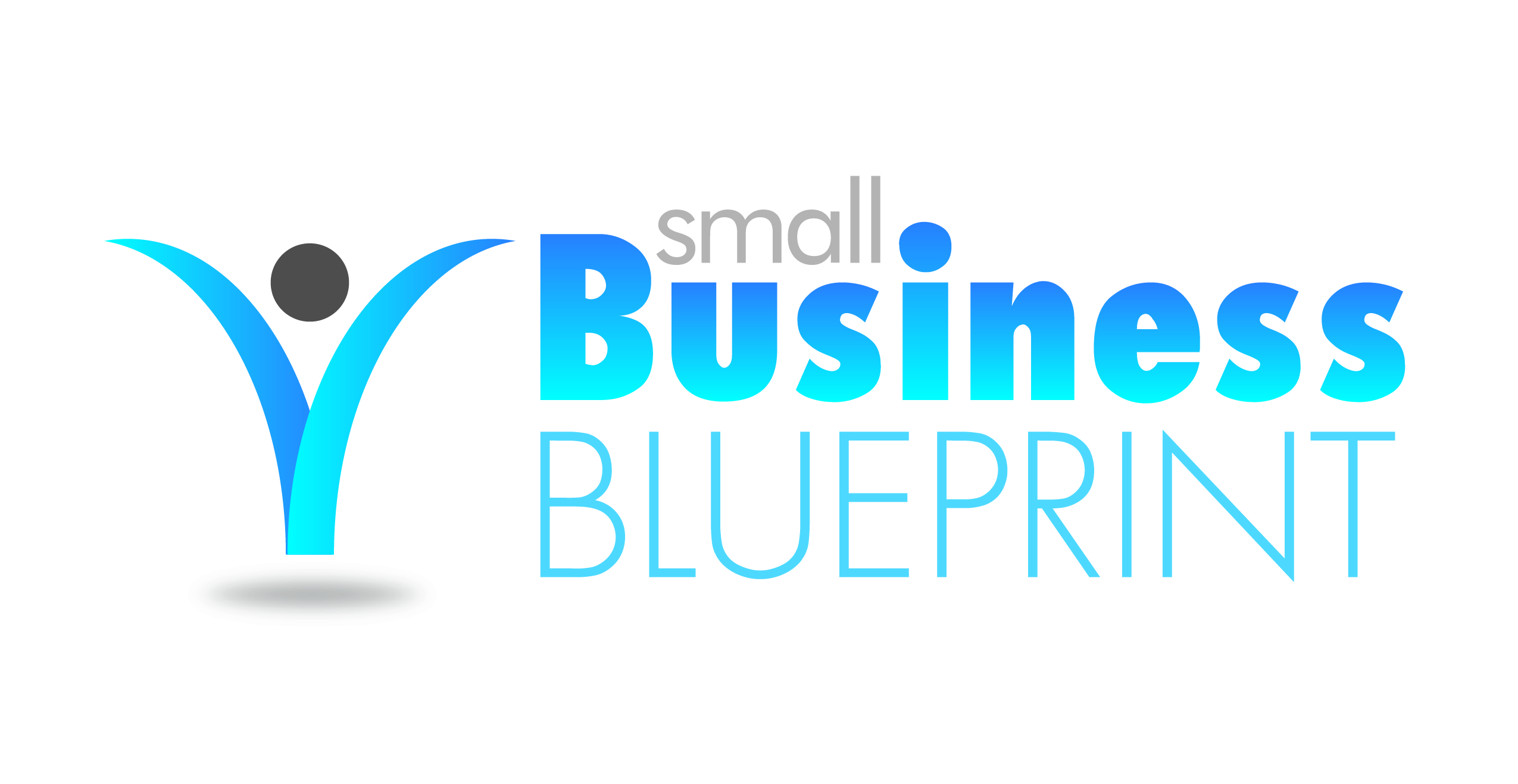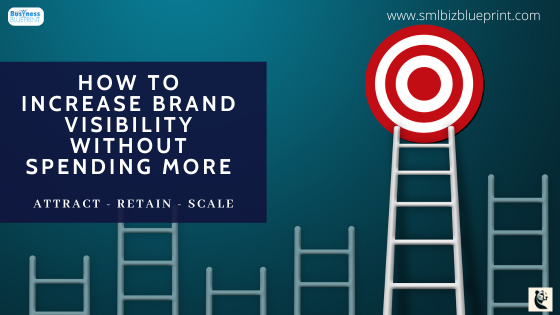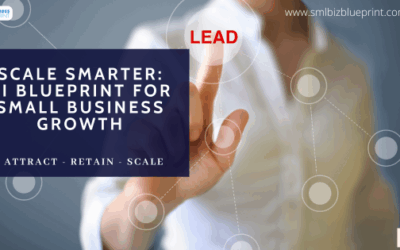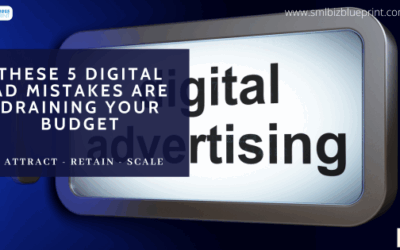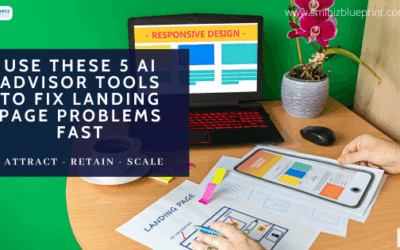You boosted your ad budget.
You tweaked your targeting.
You even tested a new platform.
And still, your reach feels smaller, your engagement is flat, and your leads aren’t growing the way they should.
If you’re feeling invisible in 2025, you’re not imagining it.
The digital landscape has shifted.
Competition is fiercer.
Algorithms are tighter.
And buyers are tuning out faster than ever.
In today’s market, visibility isn’t just about spending more—it’s about playing smarter.
Small businesses that cling to outdated tactics are fading into the background, while those who adapt are building audiences, authority, and momentum.
In this article, we’ll show you exactly how to reclaim attention with 5 smart visibility moves that align with how modern buyers behave, without blowing up your ad budget.
Because getting seen—and staying seen—is the first step to smarter, more sustainable growth.

Move 1: Create Short-Form Video That Feels Native
If you’re still relying on polished, corporate-style ads to grab attention in 2025, you’re losing ground. The reality is simple: today’s audiences engage with content that feels natural, spontaneous, and real, not overly scripted or studio-perfect.
Short-form video has exploded across platforms like Instagram Reels, TikTok, YouTube Shorts, and even LinkedIn. And for good reason: it mimics the content people already consume on a daily basis.
It blends into their feed instead of interrupting it. That’s the key—native content doesn’t scream “ad.” It earns attention.
Why Short-Form Video Works Now
Relatability wins: People trust behind-the-scenes glimpses, customer stories, quick demos, and authentic reactions far more than brand-heavy productions.
Platform priority: Instagram’s internal data shows Reels generate 22% more engagement than traditional posts.
Higher ROI: Short videos are cheaper to produce, easier to test, and faster to refresh when creative fatigue sets in.
When done right, a 30-second, phone-shot video can outperform a $10,000 polished production—because it feels real, relevant, and relatable.
What Short-Form Video Can Look Like:
A quick demo of your product solving a real-world problem
A “day in the life” behind the scenes at your company
Customer testimonials recorded casually
Time-lapse transformations or project reveals
Founder sharing lessons or answering FAQs directly to camera
Action Steps to Implement:
Batch record 5–10 short videos at a time (one session = weeks of content).
Focus on one idea per video—keep it simple and punchy.
Use trending audio or native platform features (like Reels or Shorts templates) to blend in even better.
Prioritise speed over perfection—consistency wins more than polish.
Pro Tip:
If your video feels like an ad, it’s already lost.
Create short videos that look like the content your audience already loves—and they’ll stop, watch, and engage.
The marketing manager had the budget to run video ads but kept defaulting to high-production brand pieces. Weeks later, views were low, and engagement was almost zero. One of the junior team members suggested filming a raw behind-the-scenes clip with a smartphone. They tested it—no polish, no edits. It became their top-performing piece of content that month.
The audience didn’t want perfect—they wanted real.
Move 2: Leverage UGC (User-Generated Content) and Micro-Influencers
Trust in advertising is at an all-time low. Shiny brand ads are no longer enough to move sceptical buyers.
What stands out today is social proof—real people, real experiences, and genuine conversations about your brand.
That’s why user-generated content (UGC) and micro-influencer collaborations are becoming some of the most powerful (and affordable) ways to reclaim attention in 2025.
Why UGC and Micro-Influencers Win
Authenticity resonates: Consumers trust peers more than companies.
Higher engagement rates: Micro-influencers (10K–50K followers) often drive 3x–5x higher engagement compared to celebrity endorsements.
Cost-effective: UGC campaigns and micro-collaborations are typically much cheaper than traditional media buys and more effective.
According to Influencer Marketing Hub, 82% of consumers trust micro-influencers’ recommendations more than traditional ads.
And Social Media Today reports that UGC ads have 4x higher click-through rates than non-UGC ads.
When someone sees a real customer or relatable personality using your product or sharing your service, it doesn’t feel like marketing.
It feels like a recommendation—and that’s far more persuasive.
What You Can Do:
Invite your customers to share videos, reviews, and photos featuring your products or services. Offer incentives or simply ask enthusiastically.
Partner with micro-influencers in your niche—not based on follower count, but based on audience relevance and engagement.
Feature UGC across your ads, landing pages, and social media. Build it into your core marketing materials—not as an afterthought.
This creates a content ecosystem where prospects are surrounded by real-world validation at every step of their journey.
Pro Tip:
Your best marketing team already exists—it’s your happy customers. Hand them the spotlight and let their authentic experiences drive your next wave of growth.
A small skincare brand was pushing promo-heavy ads with glossy studio shots. Clicks were expensive, and conversions were stalling. Then, they asked 10 loyal customers to record short videos using the product at home. Within a week, one of those casual clips outperformed every paid ad they’d run for the past quarter.
It wasn’t the budget that shifted results—it was trust.
Stay ahead of the curve!
Subscribe to our newsletter and never miss the latest in business growth and marketing strategies.
Move 3: Build and Activate First-Party Data
In a world where privacy regulations are tightening and third-party cookies are being phased out, owning your audience is no longer optional—it’s essential.
If you’re relying entirely on ad platforms to track your audience, you’re at the mercy of algorithm changes, lost attribution, and rising acquisition costs.
That’s why building your first-party data strategy—email lists, SMS subscribers, customer profiles, and CRM segments—is one of the smartest visibility moves you can make in 2025.
Why First-Party Data Is Critical Now
You control it: No platform or policy change can take your email list away.
It improves targeting: With better segmentation, your emails, ads, and offers become more relevant and convert better.
It boosts ROI: Campaigns targeting known audiences consistently outperform cold outreach.
According to the Boston Consulting Group, brands that use first-party data for key marketing functions achieve up to twice the ROI compared to those that don’t.
And in a 2024 survey by Salesforce, 61% of marketers said data deprecation was already negatively affecting their ad performance, but most lacked a system to capture their own audience data.
What You Can Do:
Create lead magnets: Offer free tools, guides, or access in exchange for emails.
Run list-building campaigns: Prioritise campaigns that grow your owned list, not just drive cold traffic.
Use progressive profiling: Ask small questions over time (instead of long forms) to build deep customer profiles.
Sync data across platforms: Integrate your CRM, email system, and ad accounts so you can retarget and personalise your outreach.
Once you control your audience data, you can reach them directly—on your terms—with more personal and effective messages.
Pro Tip:
Your list is more valuable than your likes. Prioritise building and nurturing your email and SMS lists—it’s the most scalable, future-proof visibility asset you can own.

Move 4: Smart Retargeting Across Channels
In 2025, attention is fragmented, and if you don’t follow up, you disappear.
Most business owners spend heavily on the first click, but fail to stay present across the buyer journey. That’s where smart retargeting comes in.
It’s not just about reminding people you exist—it’s about delivering the right message at the right time based on what they’ve already done.
Why Smart Retargeting Matters More Than Ever
Buyers rarely convert on the first visit—in fact, it often takes 6–8 touchpoints before a purchase decision.
Retargeting helps you maximise ROI on your existing traffic instead of constantly paying for new leads.
Today’s tools allow for highly segmented sequencing: think “watched 50% of video,” “clicked but didn’t buy,” or “added to cart, no checkout.”
According to Invesp, retargeted visitors are 70% more likely to convert than cold ones. Yet, many small businesses still rely on one-size-fits-all retargeting instead of building layered, intelligent sequences.
What You Can Do:
Segment your audience based on behaviour: video views, page visits, product interactions, etc.
Match your message to their journey:
Cold visitors → awareness content
Engaged visitors → lead magnet or offer
Existing leads → testimonial or urgency CTA
Use cross-channel retargeting: run email follow-ups, Meta retargeting, Google Display, and even YouTube pre-roll ads in sequence.
Refresh your retargeting creatives every 2–4 weeks to avoid fatigue and improve performance.
Retargeting isn’t just a safety net—it’s how you build familiarity, reinforce trust, and drive conversions with minimal extra cost.
Pro Tip:
If you’re only retargeting once, you’re not retargeting—you’re reminding. Build layered sequences that match user behaviour, and you’ll turn warm leads into paying customers faster.
Their campaign generated over 3,000 clicks in ten days. But sales? Barely moved. No one had thought about what happened after the first ad. With no retargeting, no email sequence, and no reminders, most prospects simply forgot. A simple automated follow-up series with layered ads turned the next campaign into a record month.
They didn’t need more traffic—they needed more traction.
Move 5: Repurpose Content Across Multiple Platforms
Creating content is hard. Distributing it smartly? That’s where growth happens.
Most businesses treat every channel like a separate campaign. They write a blog, post once on Instagram, maybe mention it in an email, and then move on.
But in today’s crowded digital space, the smartest brands are squeezing every drop of visibility out of every idea they create. That’s the power of content repurposing.
Why Repurposing Matters in 2025
People need to see your message more than once—and in more than one format.
Different platforms attract different audiences. Your blog reader isn’t always the same person watching Reels or browsing LinkedIn.
Repurposing saves time while multiplying reach and engagement, without creating content from scratch.
Research shows that businesses that distribute a single piece of content in 4+ formats see 2x–3x more engagement and website traffic.
What You Can Do:
Start with one core content asset—a blog post, case study, webinar, podcast, or long-form video.
Break it down into:
Instagram carousels
LinkedIn thought posts
Short-form Reels or TikToks
Email campaigns
Quote graphics or stat callouts
Infographics or slide decks
Use automation tools (or an internal checklist) to make content repurposing a standard operating procedure, not an afterthought.
Maintain a consistent message and voice across formats while tailoring style and tone to the platform.
When you repurpose intentionally, you make every idea work harder—and that’s how small teams compete like big brands.
Pro Tip:
If you only post once, your content isn’t underperforming—your distribution is. Treat each post as a content tree, not a one-time event.
Transform your business with insights that matter.
Subscribe to Pulse for exclusive strategies designed to drive your success.
Join Pulse Now
Conclusion
In 2025, visibility isn’t something you chase with a bigger ad budget—it’s something you build with intention.
To stand out in a noisy, algorithm-driven market, small businesses need more than good creativity. You need a strategy that earns attention, earns trust, and earns clicks—again and again.
Let’s recap the 5 smart moves that will help you reclaim attention this year:
- Short-form video that blends in with native content
- User-generated content and micro-influencer partnerships that build credibility
- First-party data strategies that give you control over your audience
- Smart retargeting that guides leads along the full buyer journey
- Repurposing content to increase reach without increasing workload
If you apply even two or three of these, you’ll start to notice the difference: better engagement, better quality leads, and more consistent conversions.
But tactics alone aren’t enough.
What’s Next? Build the System Behind the Strategy
In our next article, we’ll show you how to turn these tactics into a repeatable, AI-powered growth system that does the heavy lifting, so you can focus on scaling without chasing every trend or algorithm change.
Ready to move from fragmented marketing to a smarter, connected growth engine?
Action Steps
Audit Your Current Visibility Strategy
List where you’re currently showing up online. Is your presence consistent? Are you relying too heavily on one channel or format?
Plan and Produce Short-Form Video Content
Choose 3–5 video topics your audience cares about (e.g., product benefits, FAQs, testimonials), then film short, native-style clips using Reels or Shorts.
Source UGC and Collaborate with Micro-Influencers
Reach out to satisfied customers or niche creators with engaged audiences. Repurpose their content across your paid and organic channels.
Start Building First-Party Data Now
Create a lead magnet (checklist, quiz, downloadable guide) to grow your email/SMS list. Use opt-in forms across your landing pages and social links.
Segment and Automate Your Retargeting Campaigns
Set up retargeting flows based on actions: page views, video engagement, and cart abandoners. Tailor your messaging by audience segment.
Repurpose One Piece of Content into Five
Take a blog post or video and break it into social posts, a Reel, an email, a carousel, and a short article. Use tools like Notion or Airtable to systemise this.
FAQs
Q1: What is the best way to get more visibility online in 2025?
A1: The best way is to combine short-form video, user-generated content, first-party data, and smart retargeting into a system that builds consistent attention across channels.
Q2: Why is short-form video so important for visibility now?
A2: Short-form videos like Instagram Reels, TikToks, and YouTube Shorts are prioritised by platforms and are highly engaging for users. They deliver quick value and feel more authentic, making them ideal for catching attention.
Q3: What’s the difference between first-party and third-party data?
A3: First-party data is information you collect directly from your audience (like email addresses or on-site behaviour). Third-party data comes from external sources and is becoming less reliable due to privacy restrictions.
Q4: How can small businesses compete with bigger brands for attention?
A4: By focusing on authenticity, agility, and smart content distribution. Using UGC, repurposed content, and personalised retargeting lets smaller brands punch above their weight.
Q5: How often should I refresh my retargeting ads or creatives?
A5: Every 2–4 weeks. Creative fatigue sets in quickly in fast-moving ad environments. Refreshing your assets keeps performance strong and engagement high.
Q6: What platforms should I focus on for visibility in 2025?
A6: It depends on your audience, but Instagram, TikTok, LinkedIn, YouTube Shorts, and your owned channels (email, SMS, blog) are key for most small businesses.
Q7: What’s the next step after improving visibility?
A7: The next step is turning visibility into a repeatable system that attracts, nurtures, and converts leads. That’s what we cover in our final article: The AI Growth Blueprint.
Other Articles
How to Combine AI Tools for Landing Page Optimisation Success
How to Scale Your Marketing with AI—Without Hiring a Single Person
Use These 5 AI Advisor Tools to Fix Landing Page Problems Fast
